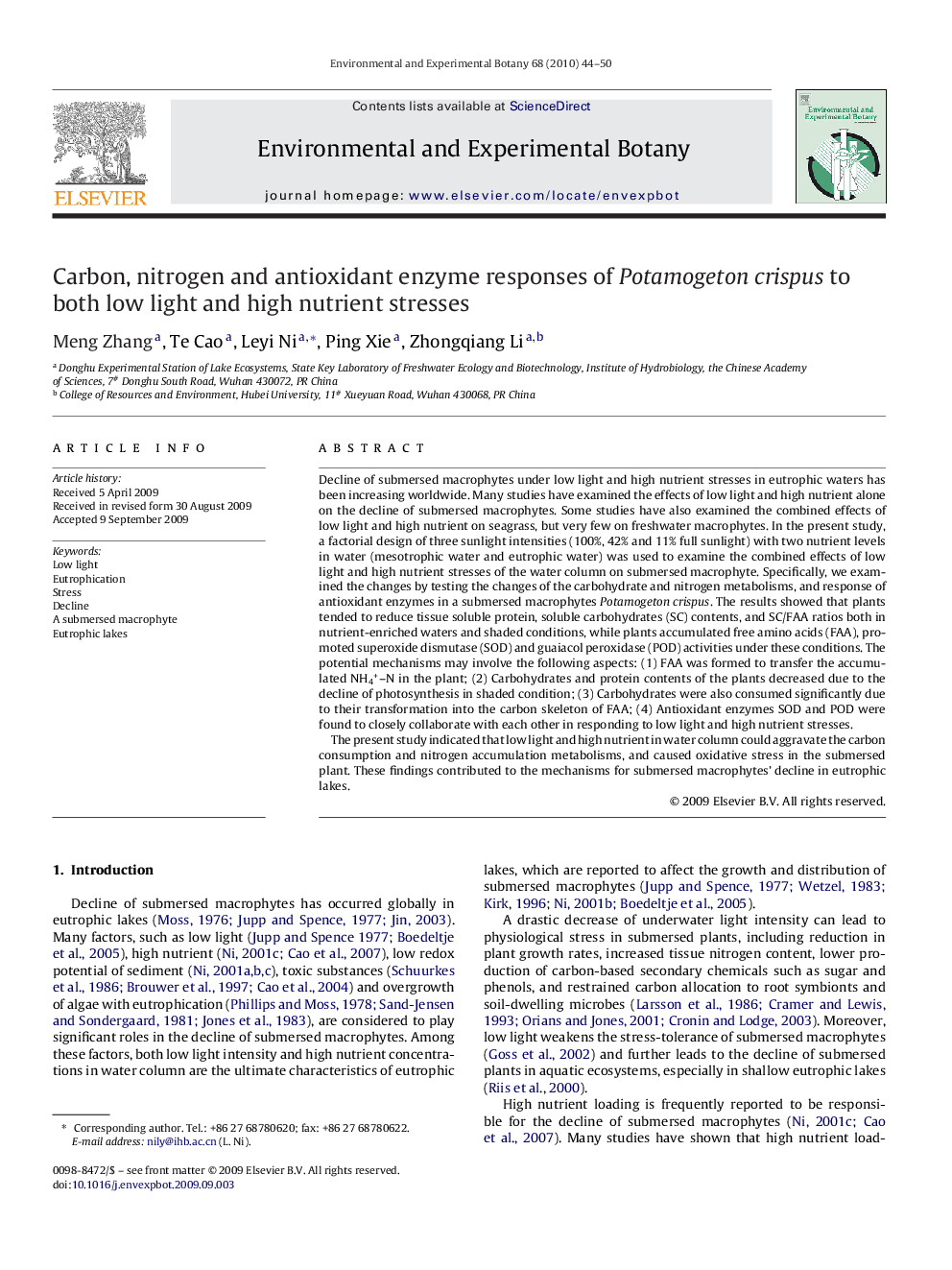| Article ID | Journal | Published Year | Pages | File Type |
|---|---|---|---|---|
| 4555015 | Environmental and Experimental Botany | 2010 | 7 Pages |
Decline of submersed macrophytes under low light and high nutrient stresses in eutrophic waters has been increasing worldwide. Many studies have examined the effects of low light and high nutrient alone on the decline of submersed macrophytes. Some studies have also examined the combined effects of low light and high nutrient on seagrass, but very few on freshwater macrophytes. In the present study, a factorial design of three sunlight intensities (100%, 42% and 11% full sunlight) with two nutrient levels in water (mesotrophic water and eutrophic water) was used to examine the combined effects of low light and high nutrient stresses of the water column on submersed macrophyte. Specifically, we examined the changes by testing the changes of the carbohydrate and nitrogen metabolisms, and response of antioxidant enzymes in a submersed macrophytes Potamogeton crispus. The results showed that plants tended to reduce tissue soluble protein, soluble carbohydrates (SC) contents, and SC/FAA ratios both in nutrient-enriched waters and shaded conditions, while plants accumulated free amino acids (FAA), promoted superoxide dismutase (SOD) and guaiacol peroxidase (POD) activities under these conditions. The potential mechanisms may involve the following aspects: (1) FAA was formed to transfer the accumulated NH4+–N in the plant; (2) Carbohydrates and protein contents of the plants decreased due to the decline of photosynthesis in shaded condition; (3) Carbohydrates were also consumed significantly due to their transformation into the carbon skeleton of FAA; (4) Antioxidant enzymes SOD and POD were found to closely collaborate with each other in responding to low light and high nutrient stresses.The present study indicated that low light and high nutrient in water column could aggravate the carbon consumption and nitrogen accumulation metabolisms, and caused oxidative stress in the submersed plant. These findings contributed to the mechanisms for submersed macrophytes’ decline in eutrophic lakes.
